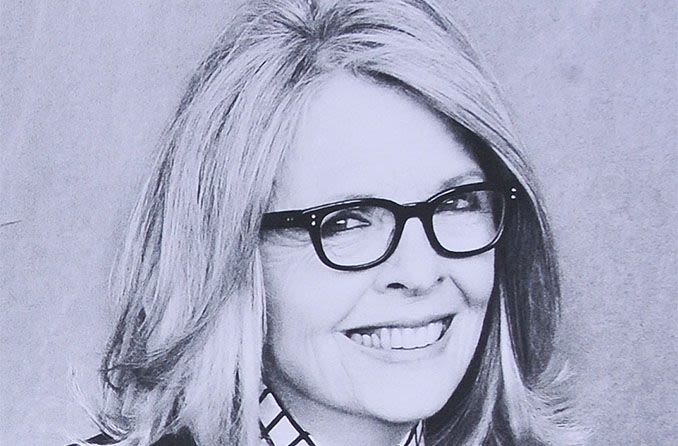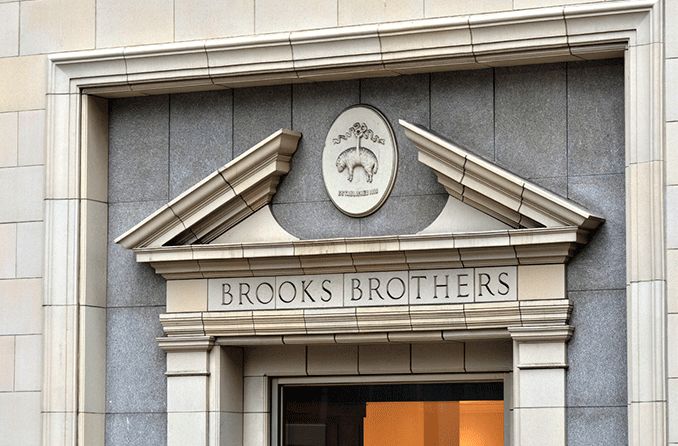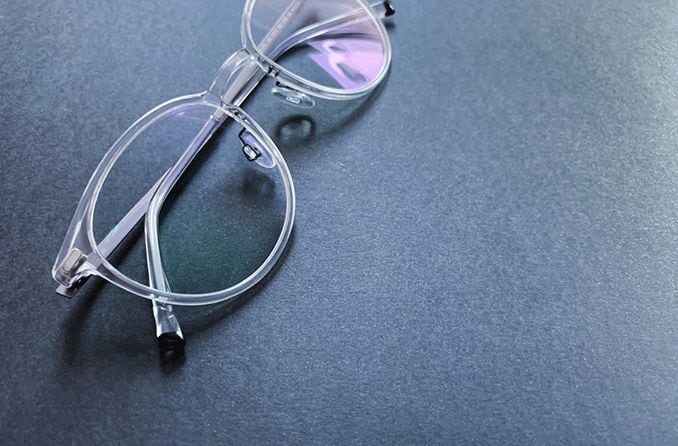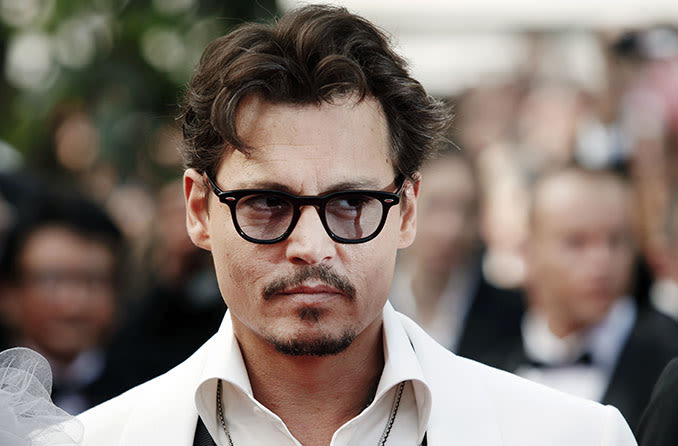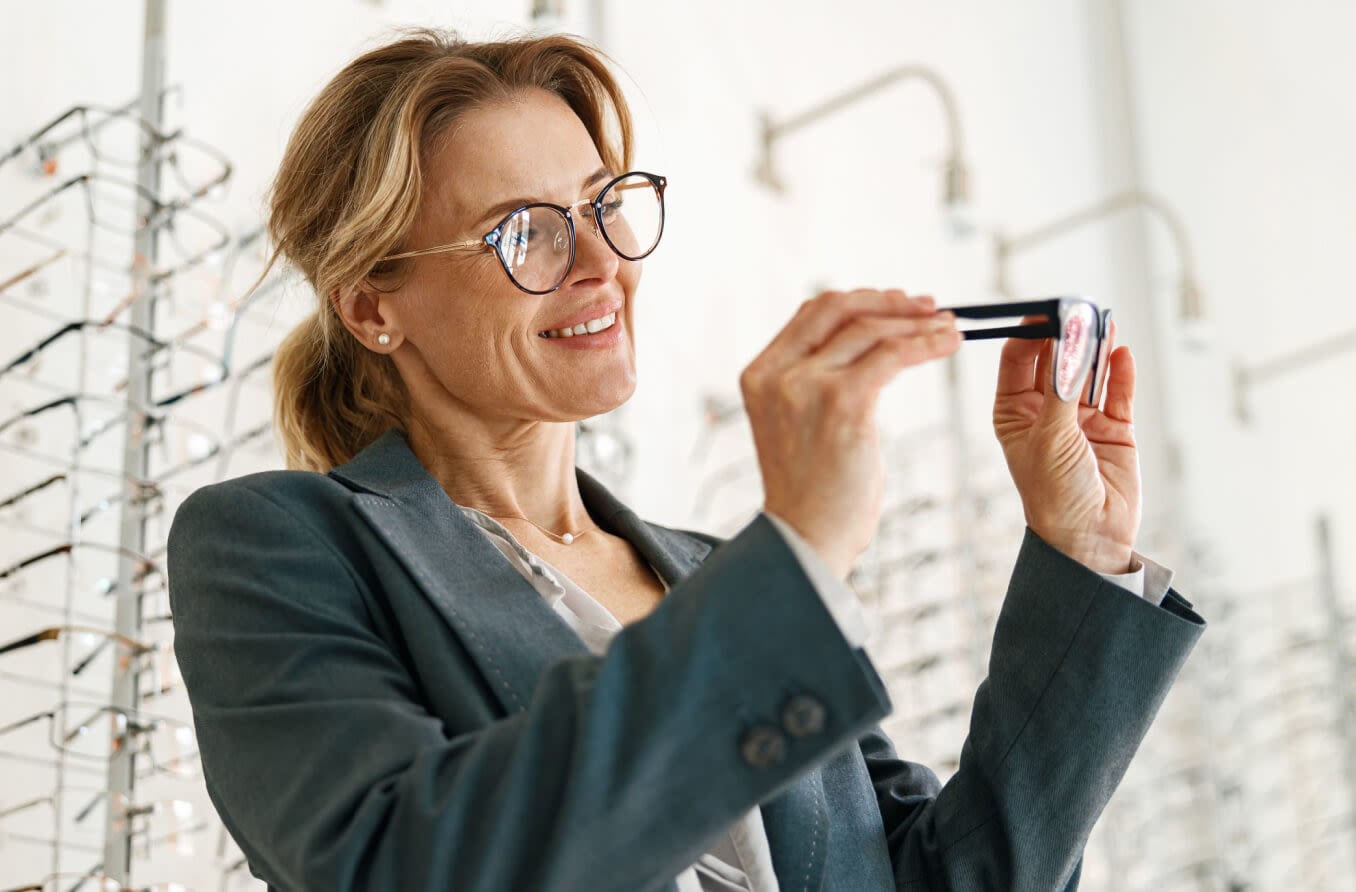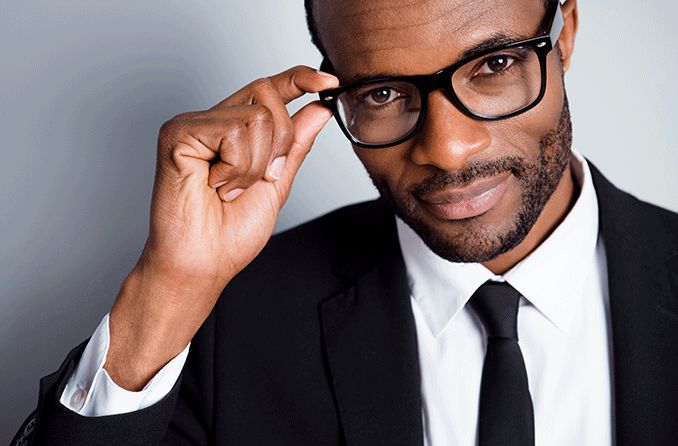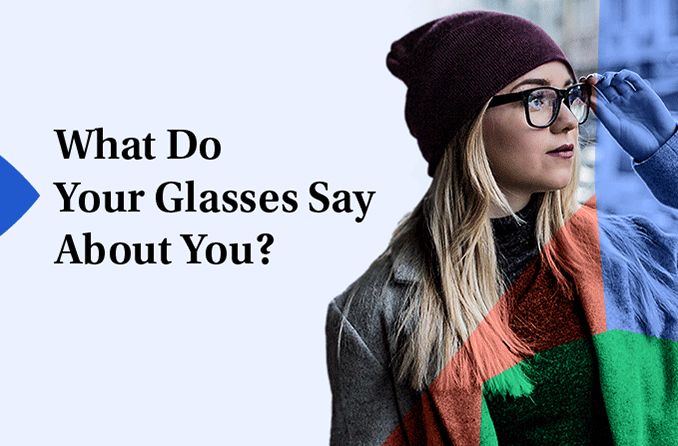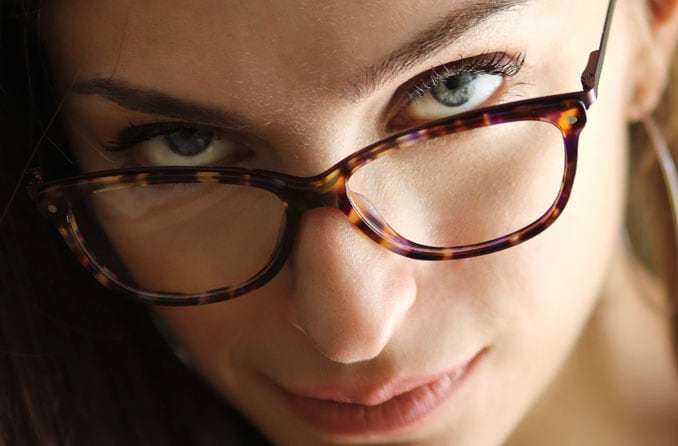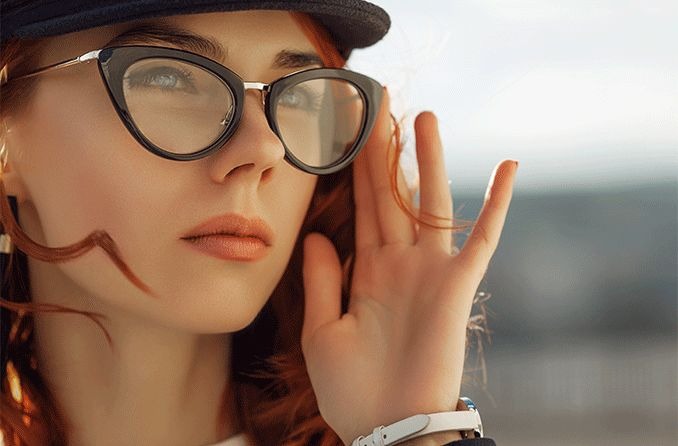We’ve come a long way, baby, since Dorothy Parker declared in 1925: “Men seldom make passes at women who wear glasses.” Flirtatious stars Marilyn Monroe, Sophia Loren and Lady Gaga have proved her wrong — repeatedly.
Also in our rearview mirror are the days of suffering for one’s vision.
You need not have 20/20 eyesight to know what inspired the names of women’s glasses in centuries past. Pain. Anything but harmless were the armless pince-nez (literally French for “pinched nose”) and single-hard-handled lorgnettes (from the French for “to squint”).
More recent — and less torturous — spec stars are a hard-wired act to follow:
Basic black Wayfarer wearers
Actress, director and photographer Diane Keaton, whose wardrobe is black, white, ivory and ebony, wears black or burgundy Wayfarers and sporadically bronze-wire squovals (as she did in 1996’s First Wives Club), with the random round wireless thrown in.
Coincidence? Supreme Court justice Ruth Bader Ginsburg, Diane Keaton’s hero, mostly is robed in black and wears — wait for it — black Wayfarers and wire-rim squovals. (Actually, it is coincidental.)
Round frames that make the woman

Iris Apfel, interior designer-turned-fashion-icon, often is identified by her in-your-face humongous round ebony frames.
So is Queen of Cakes and Nailed It! judge Sylvia Weinstock, who has lamented being mistaken for Apfel, nine years her senior. Yet she’s never held age or allegiance against her clients, including J-Lo, Hillary Clinton and perfectionists Martha Stewart and Ralph Lauren.
Throw in the mix similarly spectacled Carrie Donovan, the former Vogue fashion editor who passed away in 2001 at a tender 73 — you may recognize Donovan (and her huge black glasses) from her appearances in Old Navy TV ads.
INSPIRED YET? Find an optical store near you and start shopping.
Joplin’s granny glasses, Winehouse’s red frames
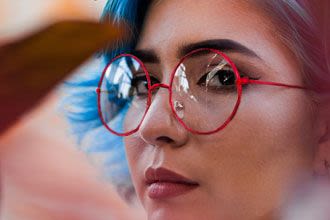
Hard-living hippie Janis Joplin rarely deviated from her uniform: oversized round wire-rim granny glasses, wild curls, piles of beads and little makeup. She died at 27 in 1970 of heroin, her ball and chain.
Oh, beehive, you could say of Amy Winehouse, whose uniform was always inky, from her beehive to her bat-wing extreme eyeliner to her tattoo-baring muscle shirts. But the singer occasionally traded her black Wayfarers for red ones during her short lifetime.
Like Joplin, Winehouse died at 27 — of alcohol abuse, in 2011. She passed in the Summertime, which Joplin sang, whereas Joplin died in October, as in Winehouse’s October Song (actually an ode to her beloved canary Ava, as in Gardner).
Bright colors stand out from the crowd

Brit designer Dame Vivienne Westwood’s flare for the unexpected started with punk and progressed to plaid padded bums. Her own attire astonishes, including Barbie pink Wayfarers, white acetate ovals and drawn-on pince-nez of crimson lipliner.
At 80, Judy Chicago’s burgundy half-wire and cobalt acetate Wayfarers are as bold as her feminist paintings — and her yellow and royal eye shadow and eggplant lipstick.
Equally infamous is singer Lady Gaga, who was blinded to the light in cigarette-covered spectacles in her video Telephone, which should’ve required a surgeon general’s warning.
SEE RELATED: Get inspired by these 7 eyewear influencers
Cat eyes can be seriously catty
America’s first black U.S. congresswoman, Shirley Chisholm, served seven terms while wearing not even remotely kittenish black-frame small cat-eyes.
Sex kitten Marilyn Monroe played dumb when trying to look smart while sizzling off-screen and in 1953’s How to Marry a Millionaire.
Wire rims as a unifying force

First Lady Eleanor Roosevelt pulled out bland metal-rimmed granny glasses and Wayfarers strictly for business — as a highly successful magazine advice columnist.
Her specs are immortalized on the cover of This is My Story (1937), part one of her three-tome autobiography. Perhaps we can blame the somber times for her plain-Jane style — FDR governed in the Great Depression and WWII.
The lorgnette of Jane Eyre’s author, Charlotte Brontë, inspires wonder, as in how was she able to write in 1847 and see at the same time?
At least by 1869, Little Women author Louisa May Alcott had a prairie companion of wire-rims with arms.
Strumpets and their specs appeal
Russian-American novelist Vladimir Nabokov’s Lolita only acquired red plastic heart frames in Stanley Kubrick’s 1962 film. (Given a choice, the late Nabokov would’ve said Nyet to the accessory.)
When Jodie Foster played 12-year-old hooker Iris in ‘76’s Taxi Driver, she protected her irises with sheer green plastic glasses, naturally.
Oscar-winning actress Jane Fonda went undercover as a call girl in oversized ombré specs in ‘71’s Klute.
Squovals and see-through styles

Lucille Ball’s ‘70s-style red-rimmed squovals emerged in her latter years, when she declared “I love backgammon,” often traveling with her board game.
"Death House Landlady” serial killer Dorothea Puente’s oversized see-through plastic-edged squoval glasses were frighteningly similar to Ball’s. The brothel madam slew eight tenants to cash their government checks — and spent her last years, 1988-2013, as an inmate courtesy of the feds.
Hotel heiress, reality star and party girl Paris Hilton has worn acrylic frames as oversized as her fame and fortune throughout her time in the spotlight.
Aviators — but not the flying kind

You could call late Sister Wendy Mary Beckett — British nun and ‘90s BBC TV art historian — the flying nun for her persistent pinkish acetate aviators.
Civil rights activist and documentary photog Dr. Doris Derby, 80, also sees through rose-colored aviators, of metal.
Rectangle frames are anything but square
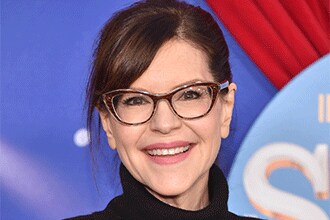
Singer Lisa Loeb is known for narrow horn-rim rectangles and cat-eyes — and now she has her own eyewear collection to share her retro look with fans.
‘90s actress Carrie-Anne Moss hid behind narrow black frames, albeit sunnies, in The Matrix.
A siren song for oversized frames
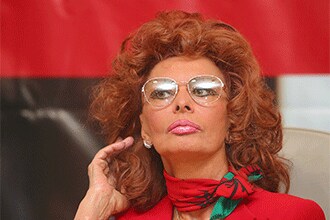
Sophia Loren, 84, rarely deviates in showcasing her hazel peepers in oversized rose-metal wire rims with adorned arms, despite the vast arsenal of styles in her bestselling eponymous Sophia Loren Eyewear collection.
Jane Fonda, 81, saw clearly via clear plastic oversized frames in 1980’s Nine to Five.
Famously visual yet non-spectacled
Self-cloistered poet Emily Dickinson did not wear spectacles, despite oft-mentioned ocular distress in her work, with lines such as “Eyes be blind, Heart be still” and "Before I got my eye put out."
Parisian fashion designer Elsa Schiaparelli never glassed-up, despite creating OTT Dada-esque feathery frames. (The era and the company she kept — namely surrealist artist Salvador Dali — may have contributed.) Prada and Dolce & Gabbana should pay her homage, as well the 1990 flick Paris is Burning with its OTT ocularly-adorned drag queens.
Though so many try to simulate smartness via specs, physicist-chemist Madame Marie Curie didn’t need glasses to win two Nobel Prizes, in 1903 and 1911. Even so, styles have been named after her — well, her nom de science.
Her true epithet was radioactive to pronunciation: Maria Salomea Skłodowska. Can’t touch this.
READ NEXT: What famous people have myopia (nearsightedness)?
